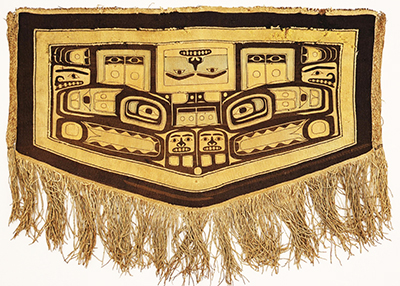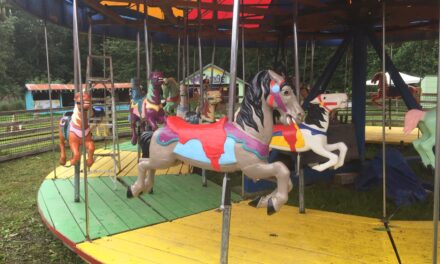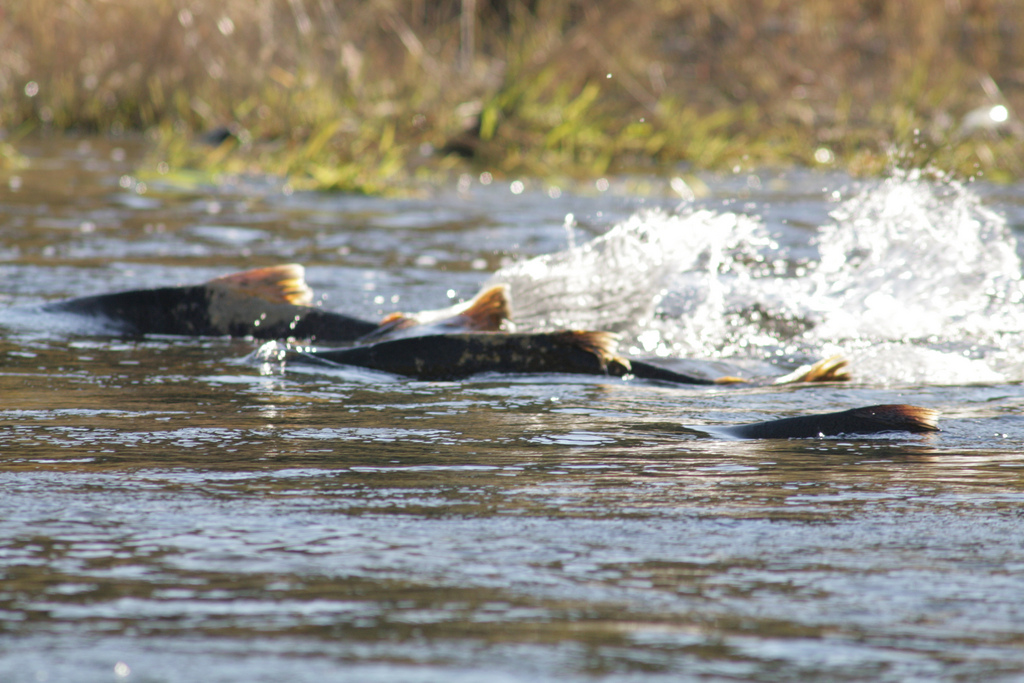A Chilkat robe is returning to Southeast Alaska after spending the last 70 years in a Seattle private collection. Five private donors bought the robe for $39,000 and donated it to the Sealaska Heritage Institute in Juneau. Native weavers are eager to study the robe and discover techniques that have been lost in the ancient art form.
When Dr. Kathryn Bunn-Marcuse, a curator at the Burke Museum in Seattle, learned that a rare Chilkat robe was for sale at the MBA Seattle Auction House; she knew she had to do something to help find the robe a proper home.
She consulted with three Native weavers who urged her to find a way to keep the blanket out of a private collection.
Lily Hope was one of the weavers who offered Bunn-Marcuse feedback and support of the robe’s acquisition.
Hope said, “A lot of the blankets that are in private collections are either top secret, very well-cared-for, but not available for weavers who are learning about the art form. Not available for us to view.”
Hope is a Tlingit weaver and teacher in Juneau. She teaches traditional weaving to 60 students. Nineteen of her students finished a child-sized Chilkat robe last February.
In researching this story, I’d heard the donation referred to as both a robe and a blanket. I asked Hope which one was right. She said some people say, “It’s not a robe because it doesn’t have sleeves.” And other people say, “It’s not a blanket because you don’t put it on a couch. She said both names are right, and both are wrong.
Hope said, “I think about Chilkat blankets as ancestors. I mean they were made, who knows? A hundred, 200 years ago. So, yes. I speak about robes as ancestors. And I speak about current ones that are in progress, or being made now, as the weaver participating as bringing a new being to life. It’s like giving birth to a human, but we are surrendering to allow this being to come through our hands.”
The blanket sold at auction holds local and cultural significance to the Chilkat Valley, because it is one of just a handful of robes that has the same design of the first robe traded from the Tsimshian to Chilkat Tlingits in Klukwan.
While often called Chilkat blankets, the artform was originally developed by the Tsimshian people. The Tlingit people of the Chilkat Valley did not start practicing and mastering the artform until they received a blanket from the Tsimshian people through trade. Chilkat weavings differ from other weavings because they contain curvilinear shapes like ovoids, which are demanding and time-consuming to master.
Bunn-Marcuse of the Burke Museum approached five private donors, who together came up with $39,000 to purchase the robe. In the end the blanket would not stay in Seattle but would instead go to the Sealaska Heritage Institute in Juneau, a private nonprofit dedicated to perpetuating all the Native cultures of Southeast Alaska.
Representatives from the Chilkat Indian Village did not respond at presstime to questions about the acquisition of the robe by Sealaska.
One of the donors, Bob Moore, said he didn’t hesitate when Bunn-Marcuse approached him and his wife about purchasing the robe. He said $39,000 is a reasonable price for a robe that takes at least a year’s worth of effort to complete. He said that he and his wife understand that many historic items that are in non-indigenous hands have found their way there by means of exploitation, while others were outright stolen.
Bob Moore said, “We’ve come to appreciate just how important these robes are to the Native people of Southeast Alaska. And how much it means to them to have these pieces that were created by their ancestors. In their current efforts to revive their cultures, which was, frankly, suppressed by missionaries and the U.S. government for decades. And it’s coming back so strong. It’s just an amazing thing to see. And we’re so happy that we can do something to contribute to that.”
Hope, the Juneau-based weaver and teacher, is excited for the blanket to arrive at SeaAlaska Heritage. She said she can’t wait to turn the blanket over and learn its secrets; the back of the blanket is where the magic is and where weavers can learn the most.
Hope said, “The way that the curvilinear ovoids are constructed in the finger-twined textile–on the front they look almost hand-painted because of the braids, but on the back they are stepping-over, almost pixelated, like a Minecraft block. It’s very, very cool.”
With the return of the blanket to Alaska, Hope said she is grateful to have access to another handwoven teacher. She and several of her students plan to attend a ceremony at SeaAlaska to welcome the blanket and to, as the Native organization wrote, bring the spirits back to life.









